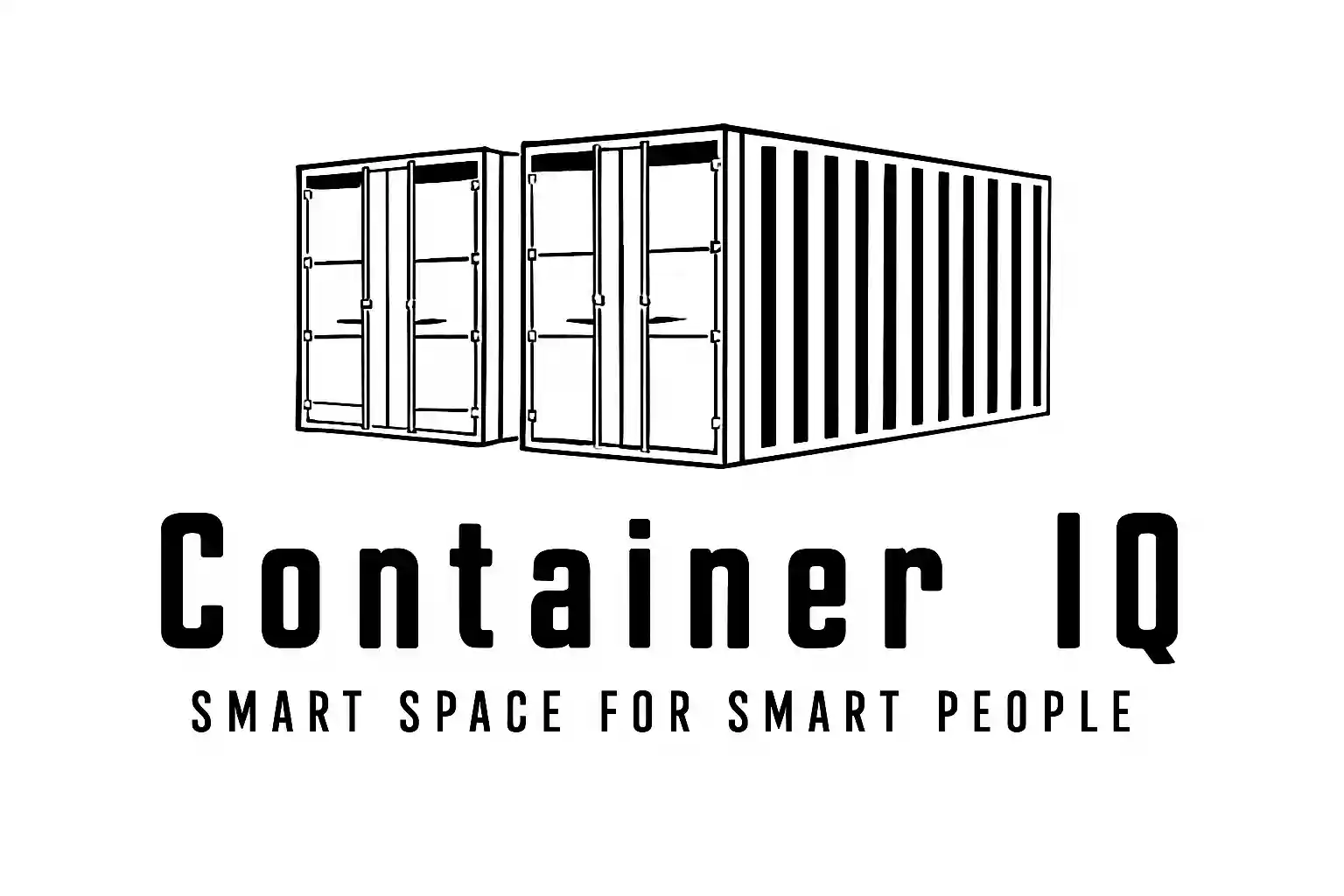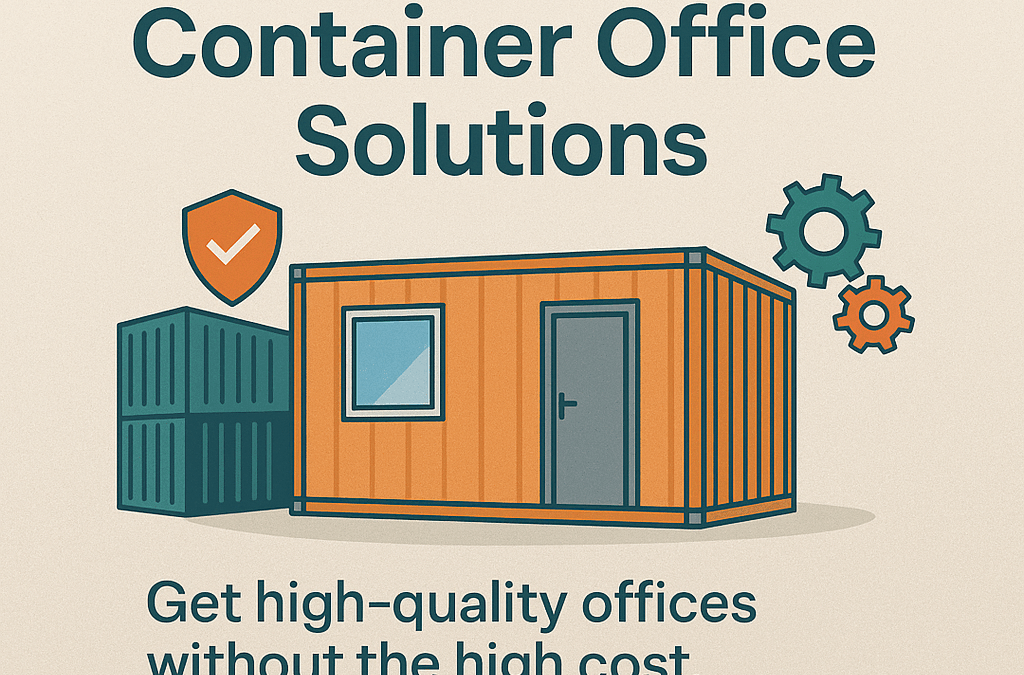Nobody wants to waste money—especially when you’re setting up a temporary or mobile office. That’s where affordable prefab container office solutions come in. They’re not just budget-friendly—they’re practical, efficient, and reliable. Whether you’re managing a construction crew, supervising a remote project, or expanding your operations, prefab container offices are quickly becoming the go-to choice.
Let’s get one thing out of the way: cheap doesn’t mean low quality. The best prefab office containers offer durability, security, and full customization without the sticker shock of traditional buildings or modular trailers. You get all the essentials of a permanent workspace, at a fraction of the cost—and in a fraction of the time.
What “Affordable Prefab Container Office Solutions” Really Means for You
Prefab (short for prefabricated) means that your office isn’t built from scratch at the job site. It’s manufactured off-site—often in a factory setting—then delivered to your location ready to use. That eliminates delays, reduces construction waste, and guarantees a consistent build quality. No muddy jobsite build-outs. No waiting weeks for electricians or HVAC technicians to show up. It’s ready when it arrives.
A prefab container office is usually built from a shipping container or steel module. The shell is rugged, windproof, and watertight. Inside, it’s finished like a small office—think drywall, vinyl flooring, LED lighting, and pre-installed electrical systems. You can even get heating and cooling systems, desks, storage, and internet wiring—all factory-installed before delivery.
Who Uses These Solutions—and Why
Prefab container offices are used by teams across every industry. Construction firms place them on active sites. Engineers set them up next to wind farms or remote energy operations. Event planners use them for pop-up command centers. Some small businesses even use them as permanent satellite offices or field sales stations.
Here’s what makes them appealing:
You don’t have to commit to permanent construction.
You can move them if needed—perfect for evolving job sites.
They arrive fully functional and comfortable.
They’re tough enough for industrial use.
And most importantly: they’re cost-effective.
We’re not talking about stripped-down metal boxes either. Today’s container offices can be sleek and professional. Need a modern look with glass doors and LED lighting? Easy. Need a more basic unit for field coordination? No problem.
Why They’re Actually More Cost-Effective Than You Think
Let’s say you’re considering a traditional mobile office trailer. Once you account for delivery, setup, utility hookups, furniture rental, and eventual teardown, you could be looking at a hefty bill. And if your project extends past your lease? Those monthly costs stack up fast.
Prefab container offices skip a lot of that. First, the construction costs are already baked in—they’re built ahead of time, often in bulk, which keeps pricing down. Second, because they’re so durable, you can reuse or relocate them instead of starting over. Many companies rent or buy one container and use it for multiple projects over several years.
And then there’s time. Every day your site operates without an office is a day lost to inefficiency. With prefab solutions, you shave weeks off your timeline. Instead of waiting for permits, inspections, and on-site builds, you plug in power and get to work. That speed translates to savings.
Inside the Office: What You’re Actually Getting
Step into a well-built prefab container office and you’ll forget you’re inside what used to be a shipping container. The good ones are fully finished with:
Drywall or paneling on the walls and ceiling
Insulated floors and ceilings to regulate temperature
LED lighting and wired electrical panels
Heating and cooling systems, often wall-mounted units
Windows with screens and security bars, if needed
Secure entry doors, sometimes with keypad access
Optional furniture, like desks, cabinets, or storage racks
Wi-Fi or ethernet wiring, so you can stay connected
Even a “budget” prefab office can include most of these features. You get to choose what matters to your team—maybe that’s extra storage, or maybe it’s a clean space for daily briefings.
The beauty of prefab is that you’re not locked into one configuration. You can get single-room layouts, open workspaces, or dual-office setups. You can even link multiple units to create larger operations—with interior doorways, connecting walkways, and shared utilities.
The Delivery and Setup Process Is Easier Than You Expect
This is where prefab container offices really shine. You don’t need a big crew, a week-long setup window, or a site trailer full of tools.
You usually just need a flat surface, like gravel, pavement, or a compacted dirt pad. The container gets delivered by a flatbed truck, then offloaded with a crane or forklift. From there, it’s leveled, plugged into site power (or a generator), and ready to use. That’s it.
Some setups can include plumbing (for restrooms or sinks), but those require a bit more planning. For most applications, power is all you need to run lights, HVAC, and devices.
Need to move it to another part of the site next month? Most units are designed to be portable. Disconnect, lift, and relocate. You’re not locked into one place.
Common Configurations That Keep Costs Low
Let’s break down a few popular, budget-friendly options:
Single-room 20-ft prefab unit: Perfect for one or two people. Can include desk, chair, and basic climate control.
40-ft dual-office layout: Two separate workspaces inside one unit—ideal for team leads or engineers.
Combo office/storage unit: One side is finished for office use, the other left as raw container space for gear.
Open-plan meeting space: No internal walls—just a clean, open room with lighting, A/C, and tables.
Multi-unit connected offices: Two or more containers joined via exterior or interior doors for expanded teams.
What makes these setups affordable is their simplicity. You’re not paying for extra frills you don’t need—but you can always add them later if your project scales up.
What to Watch Out for When Shopping “Affordable”
Here’s the deal: not all prefab container office solutions are created equal. When shopping for a budget option, make sure you’re not sacrificing essentials just to save a few bucks.
Insulation matters. Don’t get stuck sweating or freezing in a metal box.
Check electrical specs. You want grounded outlets and reliable breakers—not DIY wiring.
Know what’s included. Some “low-cost” options look cheap, but charge extra for basics like HVAC or delivery.
Ask about security features. If it’s going on a remote site, you’ll need reinforced doors and locking systems.
Make sure it’s code-compliant. Reputable providers ensure units meet local safety and building regulations.
The goal is to get value—not just the lowest price. The best providers balance cost with long-term usability, so your team stays productive and your site stays professional.
Why More Companies Are Moving This Way
Beyond the money and the speed, there’s something satisfying about choosing a solution that just works. Prefab container offices have hit a sweet spot between mobility, comfort, and practicality. They don’t demand much—but they deliver a lot.
They’re especially great if your business:
Manages multiple job sites
Works in remote or undeveloped areas
Has tight timelines or shifting schedules
Needs workspaces that can move with the crew
Wants to avoid long-term construction or permits
It’s not about having the flashiest office on-site. It’s about getting your team out of the sun, giving them a space to plan, meet, cool off, and get things done. That’s real value—and that’s what prefab offices deliver.
A Smarter Way to Work, Without Blowing the Budget
If your team needs space—and you don’t have the time, budget, or energy to build something from scratch—affordable prefab container office solutions are a no-brainer. They show up when you need them. They do their job. And when you’re done, they’re out of your way.
The best part? You don’t need to compromise. You can get a clean, functional, secure office space without overpaying, overthinking, or over-engineering.
Just pick the layout, choose the features that matter, and let the container do the rest.
if you have any questions or queries, feel free to contact us for more information, or request a free quotation

